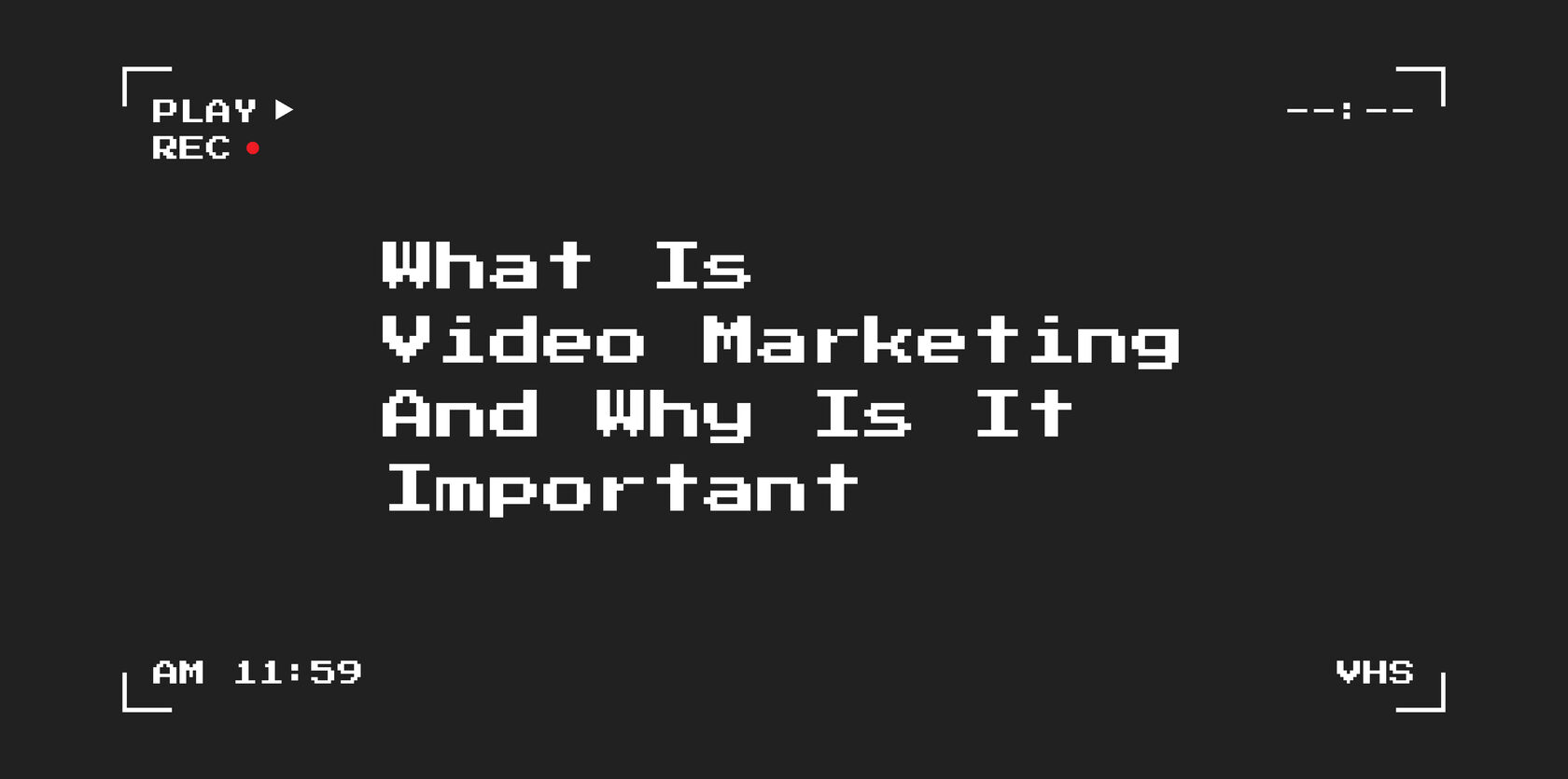Video content is literally everywhere, generating millions of views, and not using this huge potential is not one of the smartest decisions. This article will be about how and why to invest in video marketing.
Quick stats
- In 2023, videos got 82.5% of all web traffic.
- 91% of consumers choose video content.
- Video content increases organic traffic by 157% and boosts conversions by 80%.
- For 84% of consumers, video can help in decision-making.
How to create a video marketing strategy?
Before you jump into creating videos, take a step back and define your goals. What do you want to achieve with your video marketing efforts? Do you want to increase website traffic, generate leads, or boost brand awareness? Once you have a clear understanding of your goals, you can start with the following steps.
Start with your video goals: Define measurable goals for your videos that can later be tracked, such as increased brand awareness, lead generation, or website traffic.
Find your target audience: Understand whom you're trying to reach with your videos, what their needs are, their pain points, and what resonates with them.
Figure out what story you want to tell: Craft a compelling narrative. Your story should be authentic and relatable, aligned with your brand identity, and highlight the value proposition of your brand.
Keep creative requirements in mind: Creativity is the heart of video marketing. Decide on your video style and consider its visual elements, scriptwriting, and production quality to make your videos stand out.
Always (try to) stick to your timeline: Create a realistic timeline for video production and stick to it as closely as possible. You will lose any progress if you post one video in several months. Consistency is key to maintaining audience engagement.
Maintain a realistic budget: Video production is effective, but it can be time and resource-consuming as well. Your budget can range from low to high. Determine what resources you can allocate and plan accordingly.
Leverage AI technology: Explore how modern tools with artificial intelligence can enhance your video strategy. From analytics to personalized content recommendations, AI can become your ultimate assistant in creating cutting-edge dimensions.
What kind of video should I create?
Not all videos can be effective for your brand. Your choice should be based on extensive research of the niche industry, customer needs, and competitors’ strategies.
- Explainer videos: Ideal for introducing your brand, product, or service clearly and concisely.
- Testimonial videos: Showcase real customer stories to build trust and credibility.
- Product demo videos: Demonstrate the features and benefits of your product in action.
- Educational videos: Provide valuable information and insights to your audience.
- Behind-the-scenes videos: Offer a glimpse into your company's culture and values.
Aside from type, you need to consider video style.
- Live-Action: Offers a realistic and engaging feel.
- Animated: Ideal for complex concepts or brand storytelling.
- Motion Graphics: Eye-catching and visually appealing.
- Screencast: Useful for tutorials and software demonstrations.
What are the three stages of video production?
Just like any other type of content or marketing strategy, video production has clearly defined stages. Follow them so as not to turn your video production into a mess.
Pre-production: Planning, scripting, storyboarding, budgeting, and location scouting.
Production: Filming, recording audio, and capturing footage.
Post-Production: Editing, adding music and graphics, and exporting the final video.
Video distribution strategies for success
Creating a compelling video is just half the battle. In the next step, you need to determine which platform will be most effective for video marketing.
Website and blog:
- Integrate your videos seamlessly into blog posts and relevant website pages.
- Create dedicated landing pages specifically for your video content.
- Add video popups and banners to capture visitors' attention and drive clicks.
- Ensure high loading speeds to prevent buffering and frustration.
Social media platforms
- Identify the platforms where your target audience spends their time, such as YouTube, Instagram, TikTok, or others.
- Tailor your video format and length to each platform's specific requirements, keeping it bite-sized and engaging.
- Optimize captions and hashtags for discoverability to help users find your content.
- Engage with your audience through comments and replies, building community and encouraging further interaction.
- Consider paid advertising on platforms like YouTube and social media to significantly amplify your reach.
Paid advertising campaigns
- Leverage targeted video ads across various platforms, including YouTube and social media, to reach your ideal audience.
- Explore broader reach through Google Ads and other advertising platforms.
- Use video marketing to retarget website visitors who haven't yet converted.
Email marketing campaigns
- Make your newsletters more personalized with captivating video previews.
- Segment your audience and send video recommendations for a more impactful experience.
- Track email open rates and click-through rates for video links to gauge campaign effectiveness.
- Experiment with different subject lines and content to optimize click-through rates and engagement.
Time to get started!
Armed with this comprehensive guide, you're almost ready to dive into the exciting yet challenging realm of video marketing. Remember, flexibility is crucial; be open to evolving your strategy based on audience feedback and industry trends.
